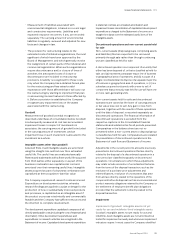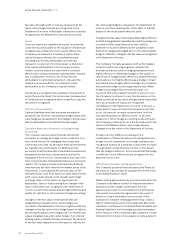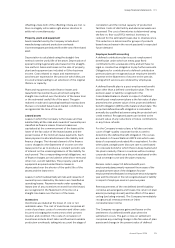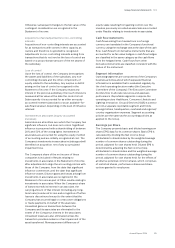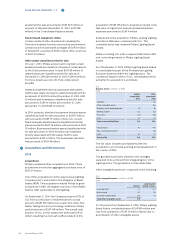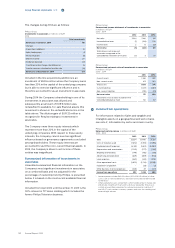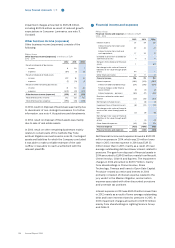Philips 2014 Annual Report Download - page 125
Download and view the complete annual report
Please find page 125 of the 2014 Philips annual report below. You can navigate through the pages in the report by either clicking on the pages listed below, or by using the keyword search tool below to find specific information within the annual report.Group nancial statements 12.9
Annual Report 2014 125
Otherwise, subsequent changes to the fair value of the
contingent consideration are recognized in the
Statement of income.
Acquisitions of and adjustments to non-controlling
interests
Acquisitions of non-controlling interests are accounted
for as transactions with owners in their capacity as
owners and therefore no goodwill is recognized.
Adjustments to non-controlling interests arising from
transactions that do not involve the loss of control are
based on a proportionate amount of the net assets of
the subsidiary.
Loss of control
Upon the loss of control, the Company derecognizes
the assets and liabilities of the subsidiary, any non-
controlling interests and the other components of
equity related to the subsidiary. Any surplus or decit
arising on the loss of control is recognized in the
Statement of income. If the Company retains any
interest in the previous subsidiary, then such interest is
measured at fair value at the date the control is lost.
Subsequently it is accounted for as either an equity-
accounted investee (associate) or as an available-for-
sale nancial asset, depending on the level of inuence
retained.
Investments in associates (equity-accounted
investees)
Associates are all entities over which the Company has
signicant inuence, but does not control. Signicant
inuence is presumed with a shareholding of between
20% and 50% of the voting rights. Investments in
associates are accounted for using the equity method
of accounting and are initially recognized at cost. The
Company’s investments in associates includes goodwill
identied on acquisition, net of any accumulated
impairment loss.
The Company’s share of the net income of these
companies is included in Results relating to
investments in associates in the Statement of income,
after adjustments to align the accounting policies with
those of the Company, from the date that signicant
inuence commences until the date that signicant
inuence ceases. Dilution gains and losses arising from
investments in associates are recognized in the
Statement of income as part of Other results relating to
investments in associates. When the Company’s share
of losses exceeds its interest in an associate, the
carrying amount of that interest (including any long-
term loans) is reduced to zero and recognition of further
losses is discontinued except to the extent that the
Company has incurred legal or constructive obligations
or made payments on behalf of the associate.
Unrealized gains on transactions between the
Company and its associates are eliminated to the
extent of the Company’s interest in the associates.
Unrealized losses are also eliminated unless the
transaction provides evidence of an impairment of the
asset transferred. Remeasurement dierences of
equity stake resulting from gaining control over the
investee previously recorded as associate are recorded
under Results relating to investments in associates.
Cash ow statements
Cash ows arising from transactions in a foreign
currency are translated in the Company’s functional
currency using the exchange rate at the date of the cash
ow. Cash ows from derivative instruments that are
accounted for as fair value hedges or cash ow hedges
are classied in the same category as the cash ows
from the hedged items. Cash ows from other
derivative instruments are classied consistent with the
nature of the instrument.
Segment information
Operating segments are components of the Company’s
business activities about which separate nancial
information is available that is evaluated regularly by
the chief operating decision maker (the Executive
Committee of the Company). The Executive Committee
decides how to allocate resources and assesses
performance. Reportable segments comprise the
operating sectors Healthcare, Consumer Lifestyle and
Lighting. Innovation, Group & Services (IG&S) is a sector
but not a separate reportable segment and holds,
amongst others, headquarters, overhead and regional/
country organization expenses. Segment accounting
policies are the same as the accounting policies as
applied to the Group.
Earnings per Share
The Company presents basic and diluted earnings per
share (EPS) data for its common shares. Basic EPS is
calculated by dividing the Net income (loss)
attributable to shareholders by the weighted average
number of common shares outstanding during the
period, adjusted for own shares held. Diluted EPS is
determined by adjusting the Net income (loss)
attributable to shareholders and the weighted average
number of common shares outstanding during the
period, adjusted for own shares held, for the eects of
all dilutive potential common shares, which comprises
of restricted shares, performance shares and share
options granted to employees.






